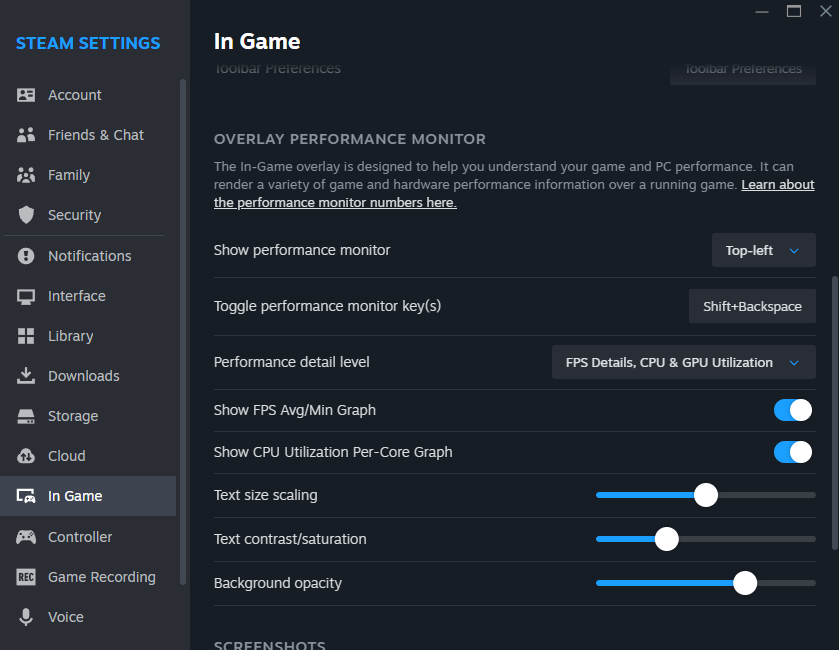Today’s Steam Client update makes available a new performance monitor that Steam can render over your game. This feature is designed to help you understand how your PC is performing and how it is impacting your game’s performance.
The new performance overlay will show you frame rate values, similar to the old FPS counter, but it can also break out generated frames from DLSS or FSR vs actual game frame rate. It can show you min/max single frame values and a graph of frame rate over time. Additionally, it will show you CPU performance information, GPU performance information, and system memory usage information. These pieces of data can be useful to understand the causes of bad game performance whether that be a slow CPU, GPU, or too high graphics settings that are over subscribing your video or system ram.
The new performance monitor gives you four levels of detail: Single FPS Value, FPS Details, FPS Details, CPU & GPU Utilization, and FPS, CPU, GPU & RAM Full Details.
You can keep the display small with a single FPS value, or you can expand to the full details when debugging a performance issue. These details can be adjusted live in-game. You can also adjust color saturation, text size, and background opacity to make this as prominent (as seen below), or as subtle and fading into the background of the game as you’d like. You can optionally show a graph of FPS over time, and you can optionally show a graph of CPU utilization per-core.
Learn much more about the individual numbers we show, how we calculate them, and how to think about them here in our support FAQ.
To enable the new performance overlay, adjust it’s size and position, set a hot-key, and more, go to Settings->In Game and find the new Performance Overlay section as pictured below.

Today’s update is a first step towards helping Steam users more easily understand their game and system performance. We have plans to add some additional pieces of data to the performance overlay going forward, to detect certain common bad hardware performance scenarios, and to show a larger summary of your games performance in the overlay itself when you hit shift-tab.
This first version also focuses on Windows users and on the most common GPU hardware. If you are on a non-Windows platform, or on an uncommon or older GPU, you may not see the full set of data today.
We hope today’s update is useful to you, and we’d love to hear from you about what else you’d like to see us improve in this area.


